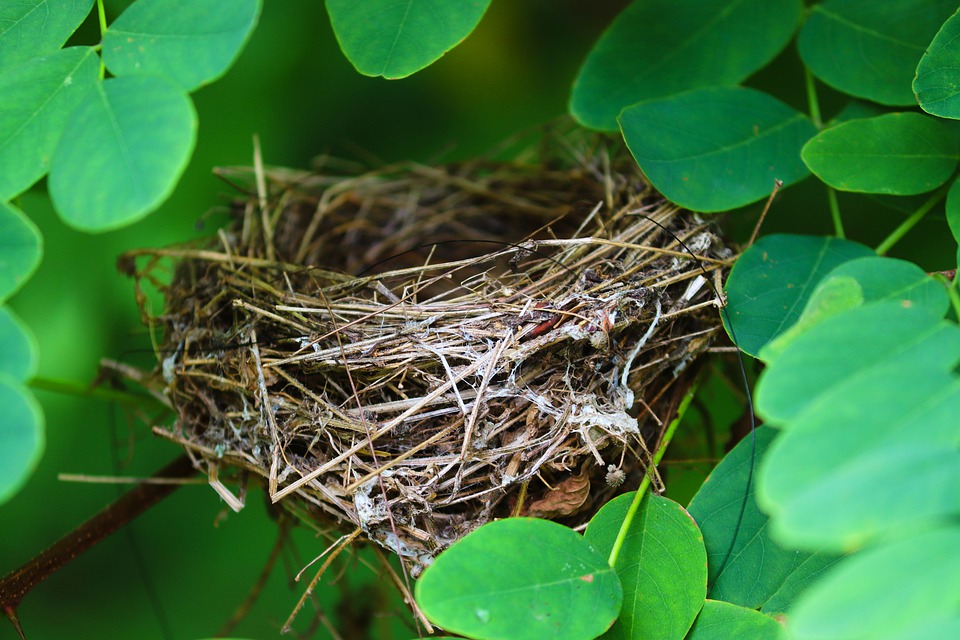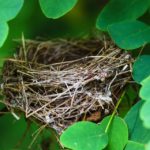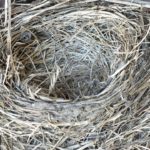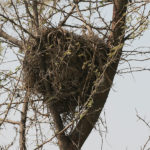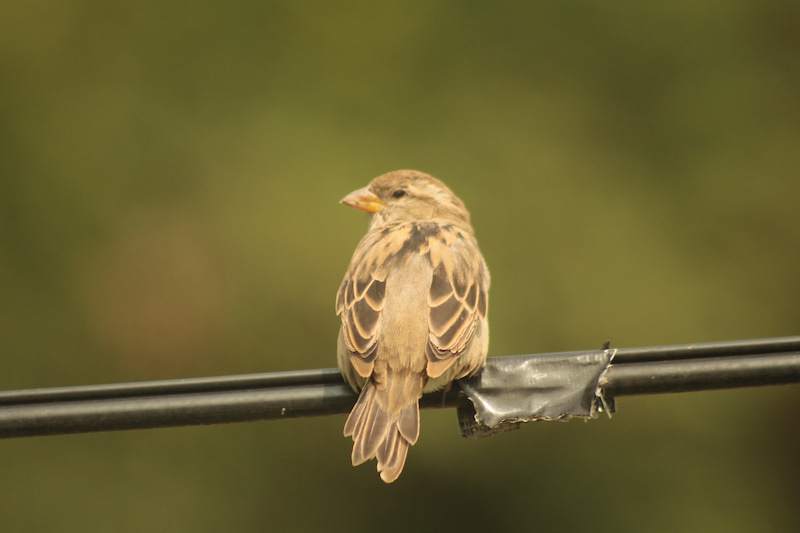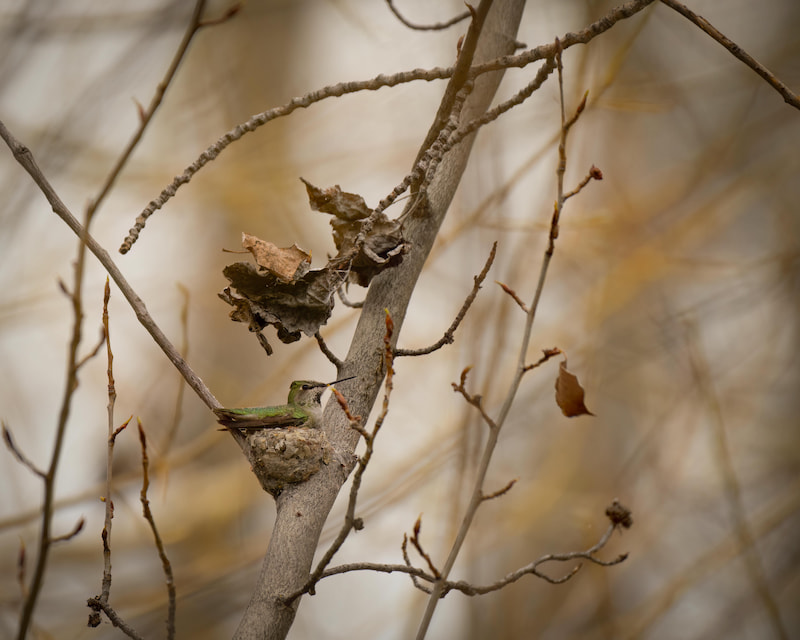Every winter, as trees lose their leaves, we get a unique view into how trees support the local ecosystem. If you look up at nearby trees this time of year, you may see non-migratory birds perching, squirrels chasing each other from branch to branch, or moss frozen in time. Have you ever wondered why there always seem to be big bunches of leaves and twigs stuck in trees? Those are actually animal nests! Despite seeming precariously perched, they’re strategically placed and carefully constructed to withstand harsh wind, rain, and even snow. At first glance, can be challenging to guess what creature its owner is. Complicating matters, animals will sometimes utilize nests made by completely different species! Birds, squirrels, and even raccoons and opossums will make nests in trees. Here’s a little information about the nests of two wildlife species common in Illinois.
Eastern gray squirrels can build remarkably large nests, sometimes as wide as two feet! They start out with twigs as a base then add in leaves, moss, vines, and other plants. They tend to make their nests high up on trees at forks in the tree branches.
Another type of nest you might see belongs to the American robin. American robin nests are often six to eight inches wide. Unlike the squirrels, robins incorporate mud to make their nest sturdier and usually nest lower on the tree or in bushes.
Take a walk through your neighborhood and see if you can spot some nests of your own. Follow us on social media (@UIWMC on Facebook) to share these and other winter wildlife homes you find!
Check out these sources for more information about animal nests and what they look like:
https://www.allaboutbirds.org/guide/American_Robin/lifehistory
https://www.wvdnr.gov/wildlife/magazine/archive/04winter/clumps_of_leaves.shtm
https://www.massaudubon.org/learn/nature-wildlife/birds/nests-in-winter
This article was written by Monika Liszka, Class of 2022

